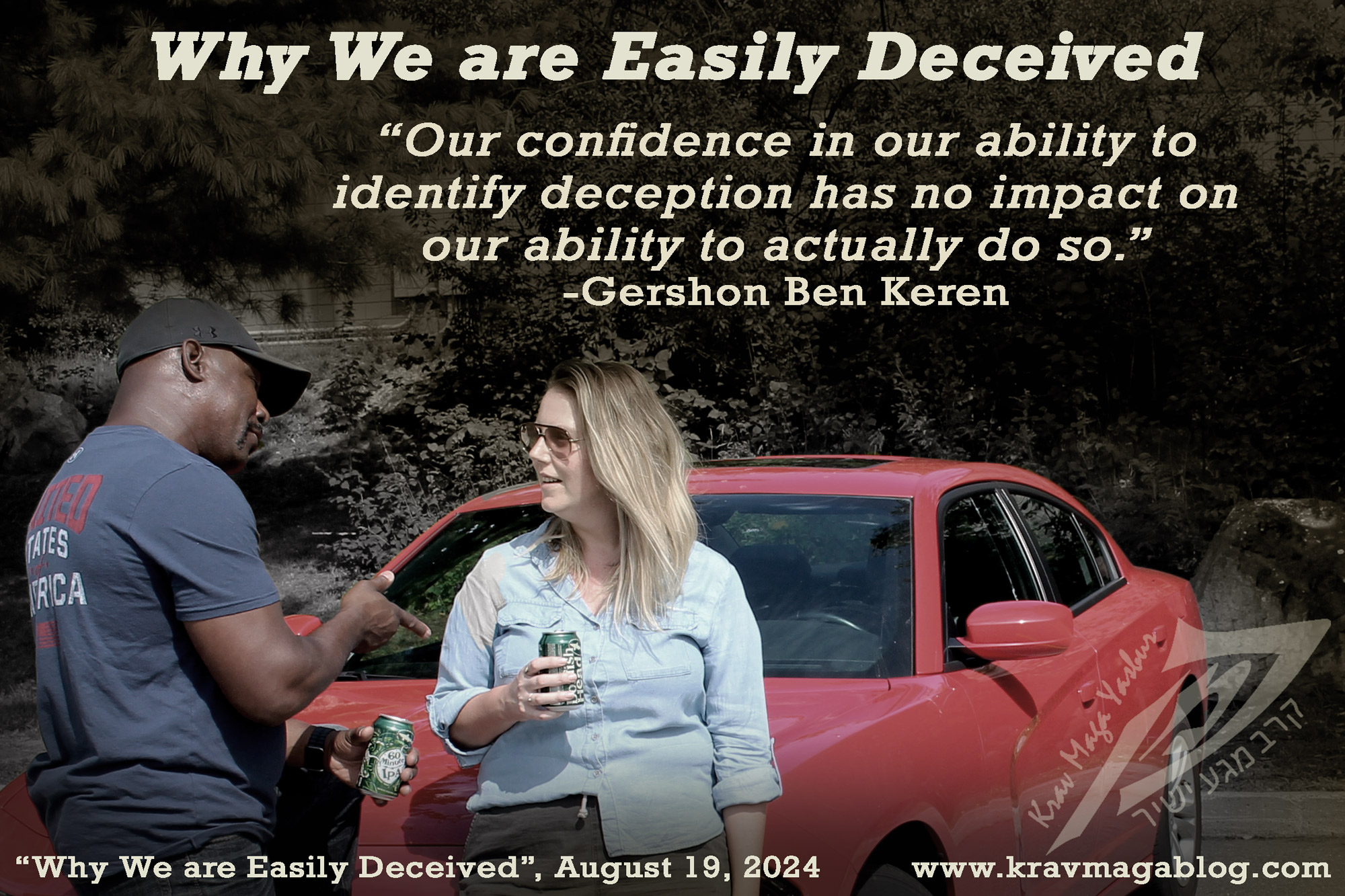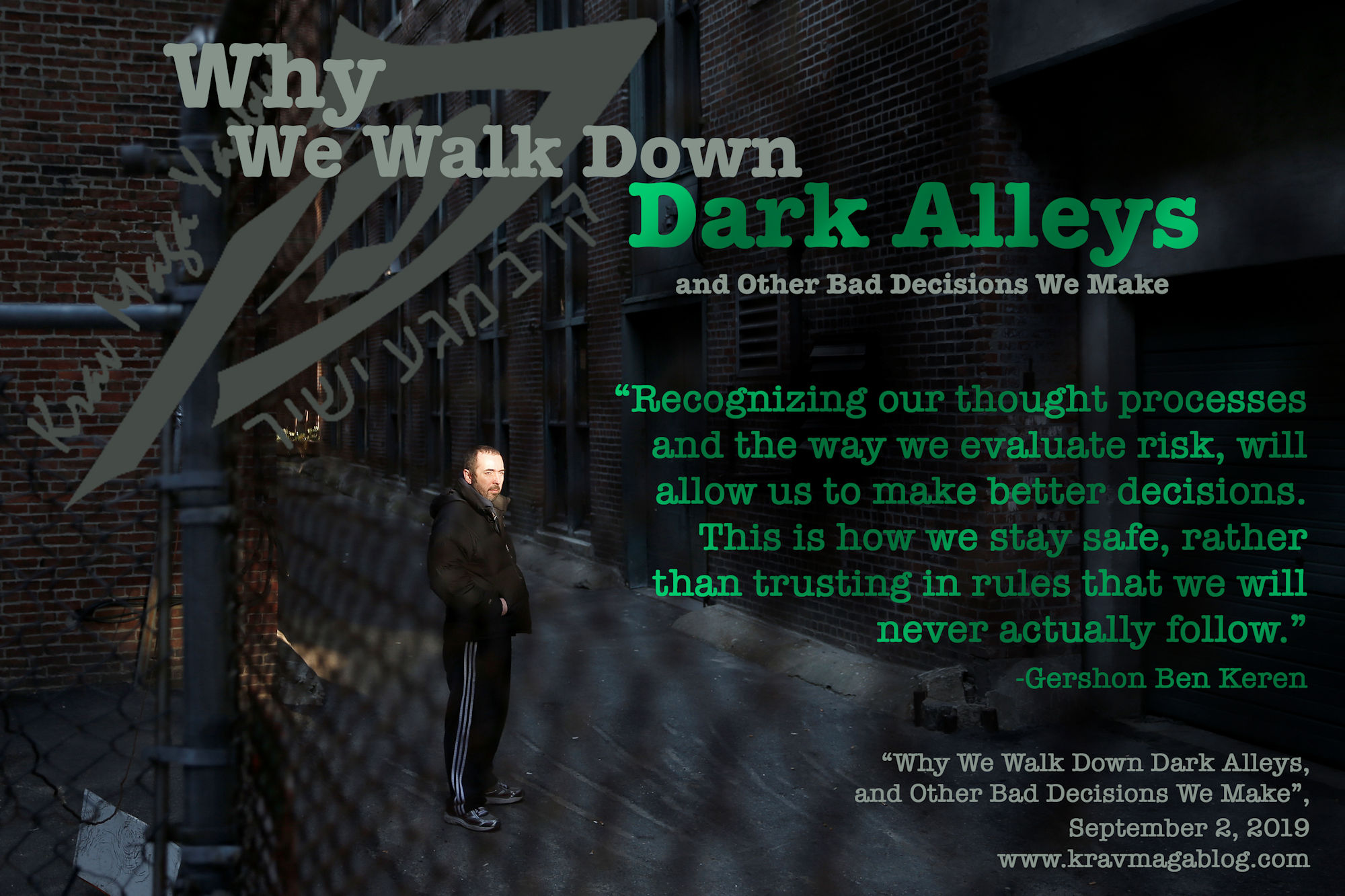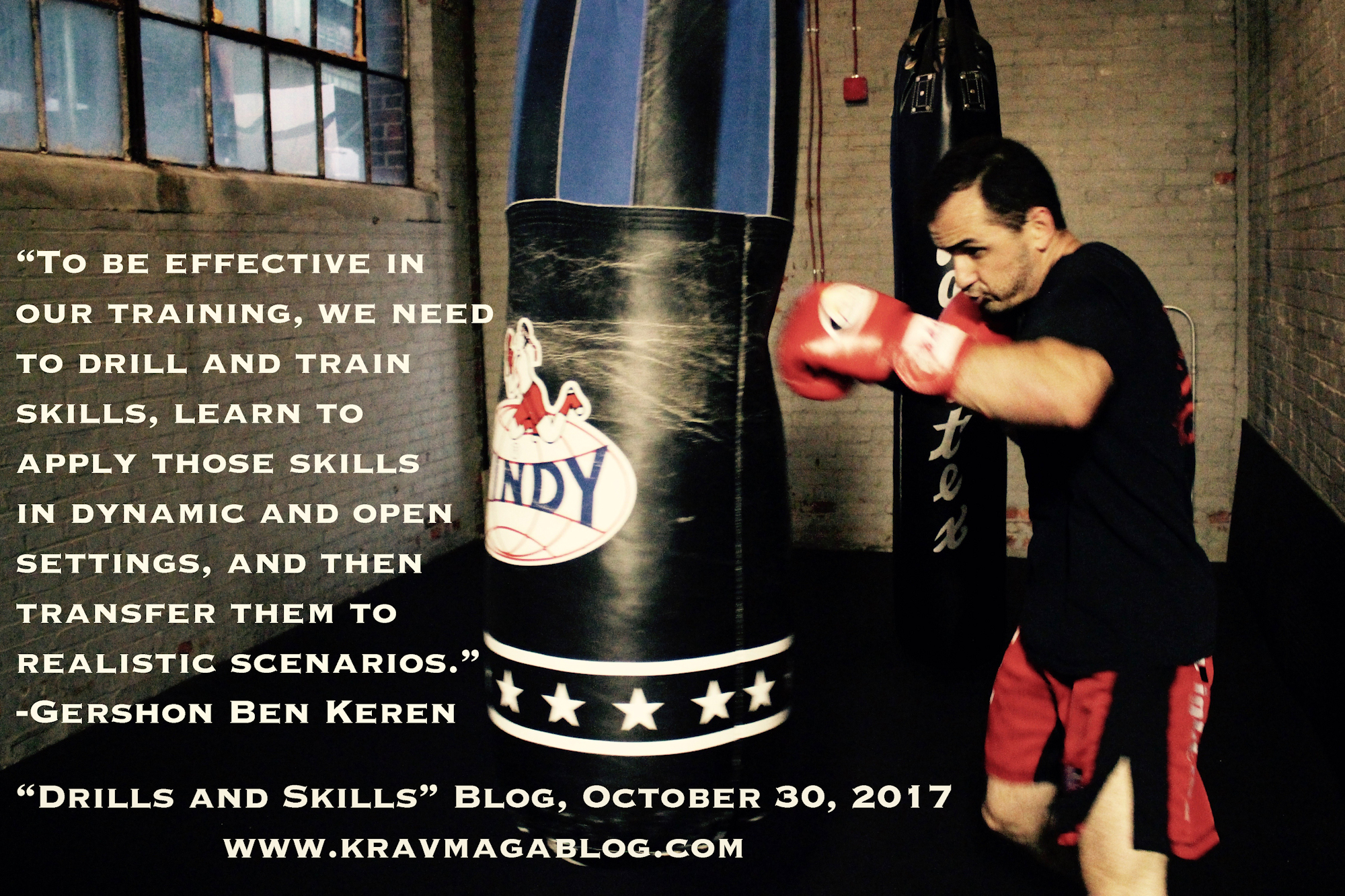The Myth of Striking, is an article written by Gershon Ben Keren, a 5th Degree Black Belt in Krav Maga, who teaches Krav Maga in Boston, MA. He has also authored three Amazon best-Selling Books on Krav Maga.
People will often simplify self-defense to the point where it becomes so simplistic, it’s almost ridiculous. I hear this often when teaching women’s self-defense, where there’s a common misconception that an eye or groin strike will quickly end a fight, or immobilize an attacker, whilst these are useful strikes, they can be difficult to pull off in real-life, dynamic and fast-paced assaults e.g. if you lack the skills and attributes to create time and space to respond with such strikes, and can’t position yourself accordingly, you may not have the opportunity to hit these targets – or possibly with enough force, for them to be effective etc. I also hear a lot from the Combatives community that traditional martial arts have no value because they are too complicated, and are not direct enough; individuals who have obviously never experienced or sparred with a Kyokushin Karateka – the format of a Kyokushin contest may not resemble a street fight, but nobody could accuse this knock-down style of fighting of lacking directness and effectiveness; a punch is a punch, and a kick is a kick, and if you can do both well, you have some good tools for dealing with a real-life assault – you just need to be competent at using them in the format of a real-life violent encounter (this means learning another set of skills and attributes), and be prepared for them to not work.
The problem that we often face, when looking at simple solutions, is how simple? At what point does the desire for simplicity put us at risk? I would argue that only assuming one outcome to a response we make is too simplistic approach to self-defense e.g. assuming that when you hit an attacker, they will respond in a particular way, such as moving backwards etc. Having responses that only rely on striking can prove to be ineffective, if the attacker is drunk, drugged up, or so adrenalized that they are basically pain resistant. The definition of madness is trying the same thing over and over again, expecting a different result, and if the only tools in your arsenal are striking tools designed to inflict pain, then your simple approach may be bordering on the simplistic – and proved ineffective. It may be that your solutions will work in 80% of the situations you are likely to face, because 80% of the time people will respond in a particular way but if they don’t you need to be able to adapt, change and move on to other solutions. If you fail to recognize this, you may be found wanting when you face that one attacker in five, who doesn’t respond according to the way you drilled and trained. Don’t get me wrong I believe wholeheartedly in striking, and believe it to generally be the first go-to approach that you should adopt when dealing with violence, however you should not assume that it is a catch-all solution.
When you hit somebody, they may respond in a number of ways. I have seen numerous clips of instructors, making statements about when you hit somebody, they respond in a particular way, which will set you up to perform a technique. It would be better to say, “if” the person responds in a particular way then it is possible to do a particular combination, follow it up with a certain technique, rather than categorically state, that this is how they will respond. I have hit people who have moved back, who have ducked, who have tried to clinch me, and who have literally stood and laughed at me. Believing that striking someone will always cause somebody to react in a particular manner, even if the strike lands well, is a dangerous assumption to make; you have to be prepared for all the possible responses that you may face. Does this complicate things? Absolutely, but violence can be complicated, and there is no room in reality based self-defense for, “it should have worked”, and, “he didn’t respond how he should have” etc. Looking at the different possible responses somebody may have to being hit, shouldn’t take you into the land of the “what ifs” but it should get you thinking in a more open way about the effects of what you do.
Are there ways to improve the effectiveness of your striking, that can teach you when and how to strike more effectively and up your chances of having your strikes result in a particular outcome? Absolutely. This largely involves taking a “Traditional” martial arts approach to your training e.g. breaking down the components of a strike, developing your skills and abilities in each component, and testing them in a dynamic setting. If you have ever taken a traditional Karate class, this is largely the format of the class; you start with the basics (Kihon) and end with sparring (Kumite). At some point to improve on your striking this is the approach you will have to take; break the technique down and test it in a dynamic setting. However things shouldn’t stop there, you should also test your striking in a scenario based fashion, putting in some of the components that may be present in a real-life situation, such as reducing the starting distance between you and your assailant, starting with your back pushed against a wall, being crammed in with other people, standing on an uneven or slippery surface etc. You should also have your aggressor sometimes respond differently to the strikes.
Simple is good, but simple will often fail if it becomes simplistic. Striking is a great go-to solution but sometimes it is not enough – it is also a good option to go to when whatever else you are attempting doesn’t seem to be working e.g. a throw, a takedown, a choke or strangulation etc. – and you need to have other solutions available to you. The Combatives Community at some point have to acknowledge that Traditional Martial Arts training methods have a place, if a person’s skills and abilities are to improve. By the same token the Traditional Martial Arts Community needs to recognize that they need to test and train their techniques, in a scenario-based fashion, replicating the environments and conditions in which real-life violence occur. As with everything the truth lies somewhere in the middle.
0 COMMENTS














